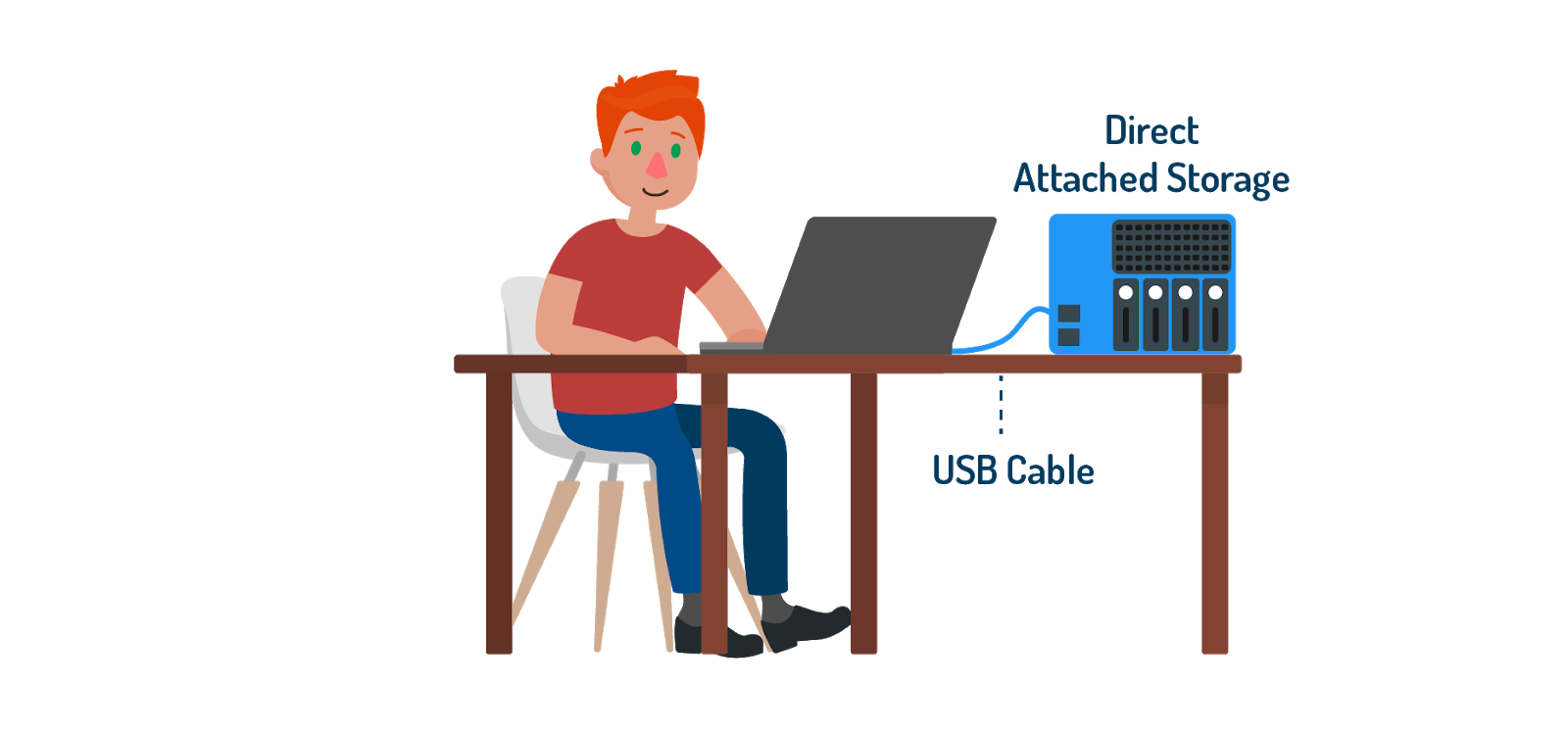What is Local Disk Storage ?
Local Disk Storage

In the last section, we imagined having a phone that could only store five songs and needing to delete songs in order to be able to upload new ones. What if we attached that phone to an external storage device that could store a terabyte’s worth of data? That would be over 70,000 songs! Or perhaps we would give up on the phone as a media device altogether, and store all our songs on the hard drive of a PC or laptop. Both of these options (the external storage device attached to the phone and the hard drive of a PC/laptop) are examples of “local disk storage”, or “direct-attached storage” (DAS). The storage device is local to (i.e., physically attached to) a personal device or to a server in a 1:1 relationship. (Remember: a server is a computer or computer program that provides services to other computers. Servers are typically more powerful and more robust than ordinary computers and usually won’t have a monitor, mouse, or keyboard.) In this 1:1 relationship, data is not accessible to other devices or servers.
The following are types of local disk storage:
- Hard Disk Drives (HDDs)

Usually referred to as “hard drives”, these are found in many personal computers and store data in binary form. The actual storage happens on a circular “platter” of magnetic material which is divided into billions of individual areas. These individual areas are organized into circular “tracks”, and the tracks are organized into “sectors”. A platter will spin at up to 10,000 revolutions per minute, and as it does so, two tiny magnets pass back and forth over its top surface and its bottom surface, either magnetizing an individual area to store a value of 1, or demagnetizing it to store a value of 0. This type of memory is referred to as “non-volatile” - it remains even when your storage device is turned off.
- Solid State Drives (SSDs)

These also provide “non-volatile memory” but use transistors (devices that regulate the flow of electrical signals) rather than magnetized media to store data. They have no moving parts. Instead, transistors are stacked in a grid of rows and columns. Data is stored in electrical charges: a chain of transistors that conducts current has a value of 1; a chain that doesn't conduct current has a value of 0. With no mechanical parts, SSDs are faster, more durable, and more efficient than HDDs. 2TB SSDs are widely-sold but are significantly more expensive than their HDD equivalents.
- Optical Disk Drives (ODDs)

These use a laser to read data from or write data to the underside of a spinning disk. Data is encoded as binary “pits” (0 means off) and “lands” (1 means on) on the reflective surface of the disk. A lens focuses the laser beam and photodiodes (which convert light into electric current) sense the light reflected from the disk and regulate the laser. ODDs can store much less data than HDDs and SSDs: a CD can hold about 700MB, most DVDs can hold between 4.7GB (single-layer) and 8.5GB (dual-layer), and Blu-rays between 25GB (single-layer) and 50GB (dual-layer). However, ODDs are convenient because they are inexpensive and highly portable.
Local disk storage is a good choice for individuals and small businesses that require a set amount of data storage and has the added benefit of being very simple to use. Additional drives can be added when they’re needed.
Local disk storage communicates with whatever it’s attached to using a language known as a “protocol”. There are a number of different protocols used in this type of storage, each with a different port (i.e., connection-point); for example:

The protocols most commonly-used with local disk storage are SCSI (Small Computer System Interface), SAS (Serial Attached SCSI), SATA (Serial Advanced Technology Attachment), USB (Universal Serial Bus), and FC (Fibre Channel).
Because different local storage devices use different protocols, a server may need an adapter to be able to communicate with one. This hardware (known as a “host bus adapter” or HBA) is plugged-in to a server and adapts the server to the storage device’s protocol. So if, for example, a SCSI-protocol HBA is attached to the server, and the HBA is then connected to a SCSI local storage device with the right cables, it will be able to transmit data from the server to the storage and vice versa.





